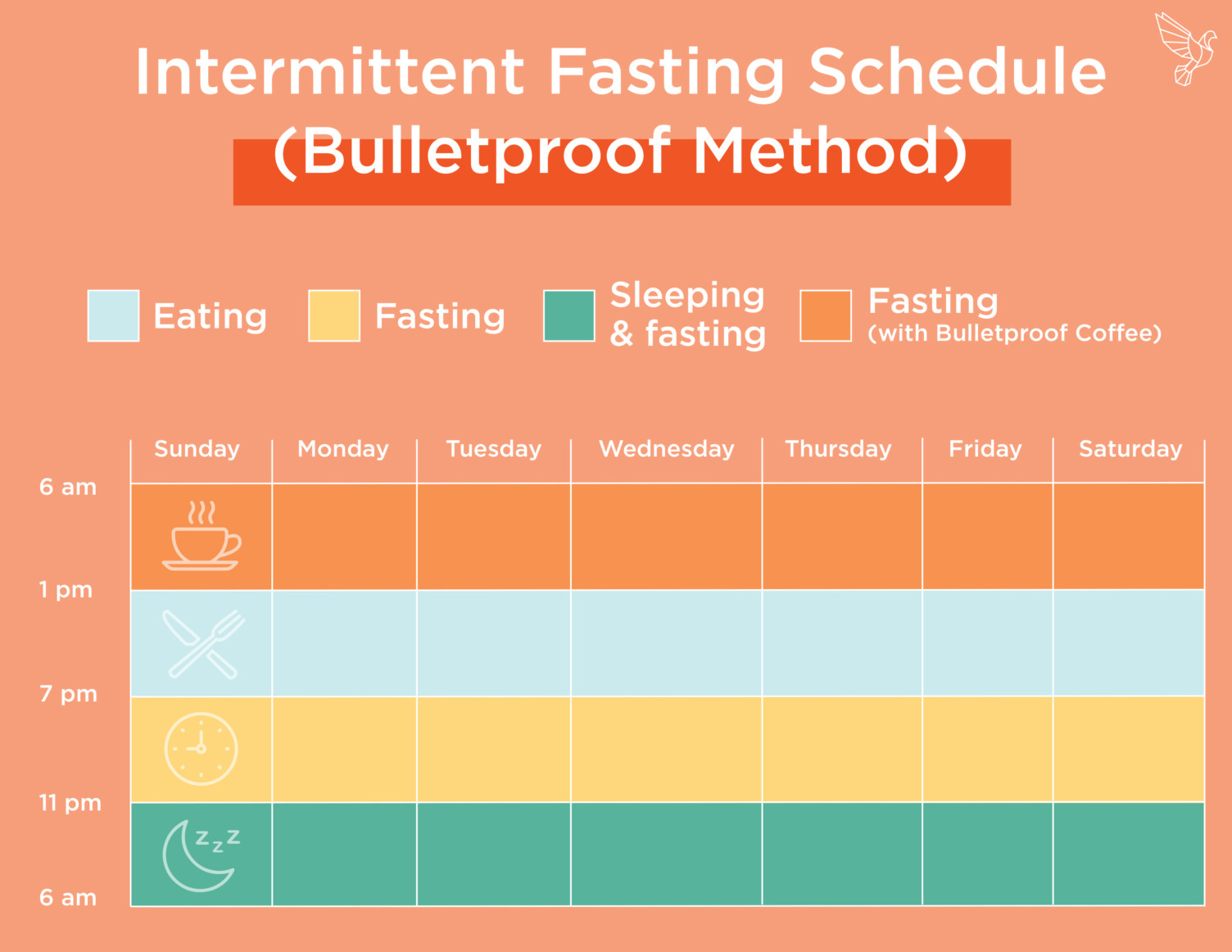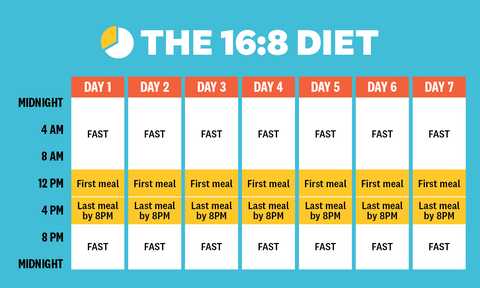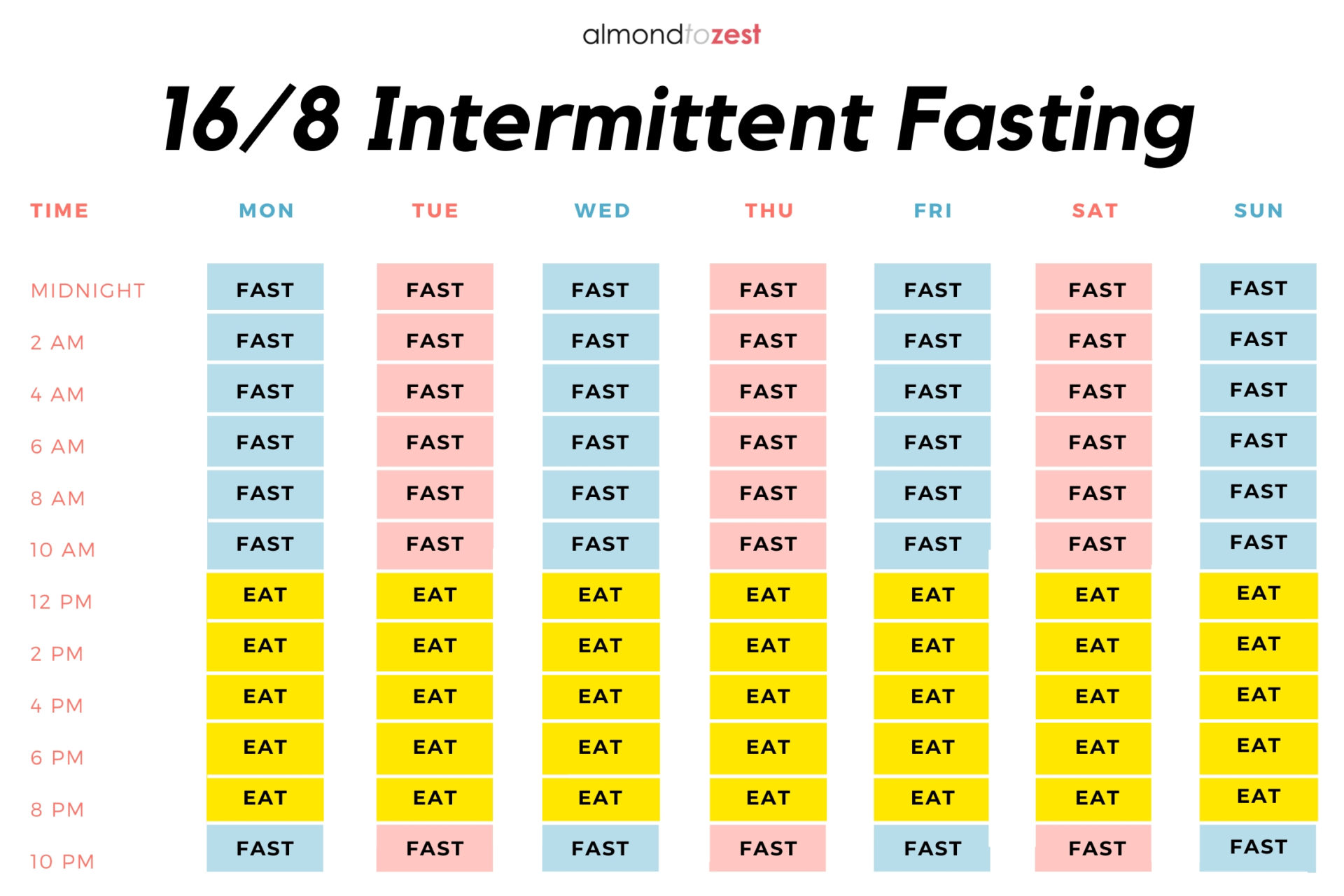Intermittent fasting has gained significant popularity in recent years for its potential health benefits and its effectiveness in weight loss. This eating pattern involves alternating between periods of fasting and eating, with one of the most common schedules being the 16/8 method. In this guide, we will delve into the complete intermittent fasting guide for beginners, providing you with all the information you need to get started on your fasting journey.
Intermittent Fasting Schedule 16/8: What does it mean?
 The 16/8 method is one of the most popular and easiest ways to incorporate intermittent fasting into your lifestyle. It involves fasting for 16 hours and restricting your eating window to 8 hours each day. For example, you could choose to only eat between 12 pm and 8 pm, and fast for the remaining 16 hours.
The 16/8 method is one of the most popular and easiest ways to incorporate intermittent fasting into your lifestyle. It involves fasting for 16 hours and restricting your eating window to 8 hours each day. For example, you could choose to only eat between 12 pm and 8 pm, and fast for the remaining 16 hours.
Benefits of Intermittent Fasting
 Intermittent fasting has been linked to several health benefits, both physical and mental. It can aid weight loss by reducing calorie intake and increasing fat burning processes in the body. It may also improve insulin sensitivity and lower blood sugar levels, making it a potentially effective strategy for managing diabetes.
Intermittent fasting has been linked to several health benefits, both physical and mental. It can aid weight loss by reducing calorie intake and increasing fat burning processes in the body. It may also improve insulin sensitivity and lower blood sugar levels, making it a potentially effective strategy for managing diabetes.
Beyond its weight loss benefits, intermittent fasting has been shown to have positive effects on cognitive function and brain health. It may stimulate the production of new brain cells, enhance memory, and protect against neurodegenerative diseases.
Tips for a Successful Intermittent Fasting Journey
 Getting started with intermittent fasting can be challenging, especially if you are new to this eating pattern. Here are some tips to help you have a successful fasting journey:
Getting started with intermittent fasting can be challenging, especially if you are new to this eating pattern. Here are some tips to help you have a successful fasting journey:
- Start slowly: Begin with shorter fasting periods, such as 12-14 hours, and gradually increase the duration as your body adapts.
- Stay hydrated: Drink plenty of water during your fasting periods to keep your body hydrated and curb hunger.
- Choose nutrient-dense foods: Focus on consuming whole, unprocessed foods during your eating window to ensure you are meeting your nutritional needs.
- Listen to your body: Pay attention to your hunger and satiety cues. If you feel excessively hungry during fasting, consider adjusting your eating window or meal sizes.
Explore Different Intermittent Fasting Schedules
 While the 16/8 method is a popular choice, there are other intermittent fasting schedules you can explore based on your preferences and lifestyle. Some of these include:
While the 16/8 method is a popular choice, there are other intermittent fasting schedules you can explore based on your preferences and lifestyle. Some of these include:
- 5:2 Diet: This approach involves eating normally for five days of the week and restricting calorie intake to 500-600 calories for the remaining two days.
- Alternate Day Fasting: With this schedule, you alternate between days of fasting and days of regular eating.
It’s important to choose a fasting schedule that fits your lifestyle and is sustainable for long-term adherence. Experiment with different approaches to find the one that works best for you.
Intermittent Fasting Schedule 16/8: A Printable Guide
 If you prefer a visual reference, you can find printable intermittent fasting schedules online. These guides can help you track your fasting and eating windows, making it easier to stay on track with your fasting goals.
If you prefer a visual reference, you can find printable intermittent fasting schedules online. These guides can help you track your fasting and eating windows, making it easier to stay on track with your fasting goals.
Final Thoughts
 Intermittent fasting, specifically the 16/8 method, is a popular and effective approach to improving health, promoting weight loss, and optimizing brain function. However, it’s essential to remember that fasting is not suitable for everyone, especially individuals with certain medical conditions or those who are pregnant or breastfeeding. As with any dietary change, it’s important to consult with a healthcare professional before starting intermittent fasting.
Intermittent fasting, specifically the 16/8 method, is a popular and effective approach to improving health, promoting weight loss, and optimizing brain function. However, it’s essential to remember that fasting is not suitable for everyone, especially individuals with certain medical conditions or those who are pregnant or breastfeeding. As with any dietary change, it’s important to consult with a healthcare professional before starting intermittent fasting.
With dedication and consistency, intermittent fasting can be a powerful tool on your journey towards a healthier lifestyle. Remember to start slowly, stay hydrated, and listen to your body’s signals. By combining intermittent fasting with balanced nutrition and regular exercise, you can achieve your health and wellness goals in a sustainable way.